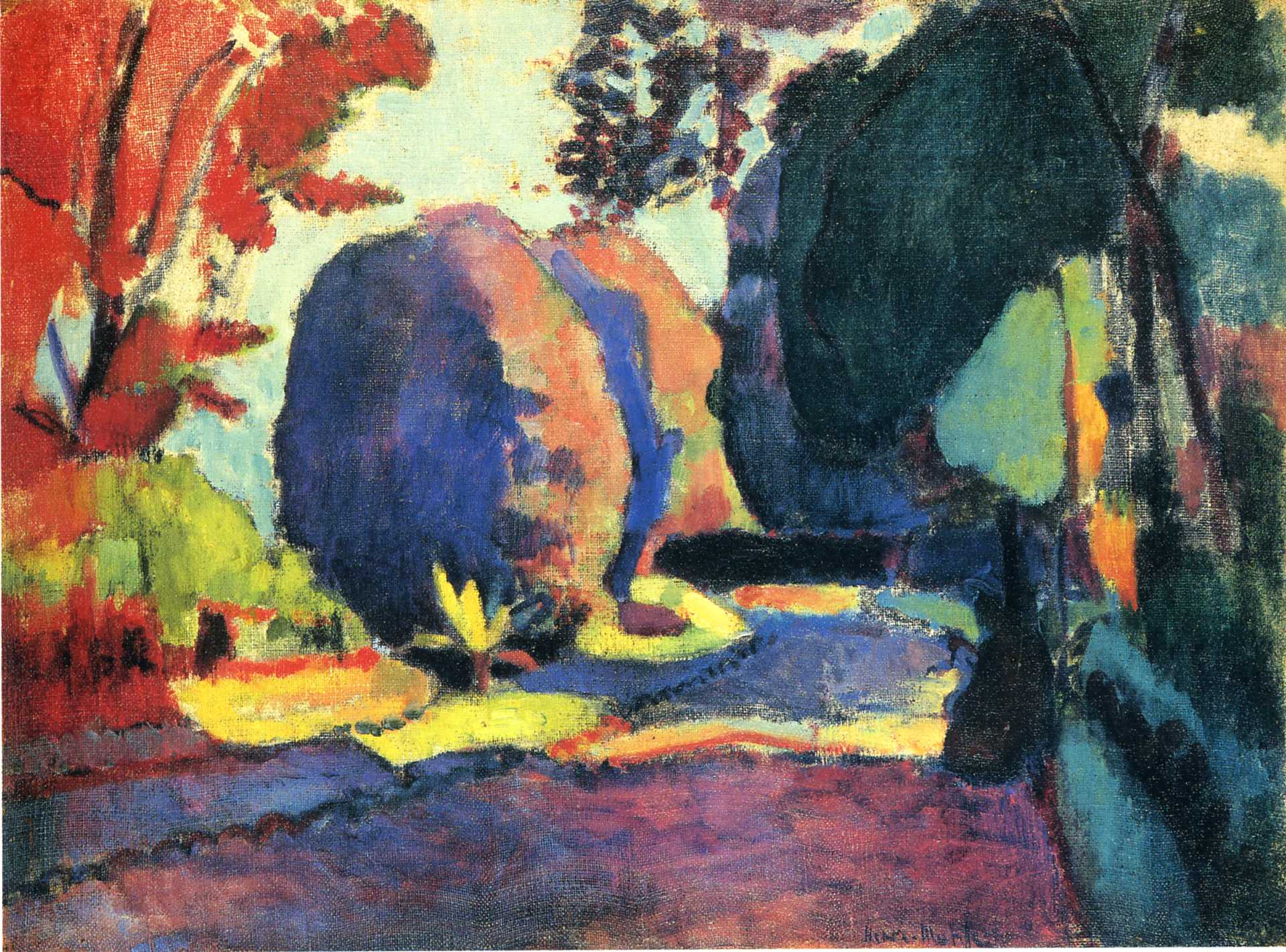art-Matisse.com
Henri Matisse 1869-1954
©Henri Matisse - The Luxembourg Gardens 1901
 The Luxembourg Gardens |
From the State Hermitage Museum, Saint Petersburg, Russia:
Around 1901 Matisse painted several landscapes with views of the Luxembourg Gardens in Paris. He was working in the
genre favoured by the Impressionists, but as in his still lifes, he introduced his own logic and approach to create
a very different world from theirs. "I prefer to sacrifice Impressionist charm in order to achieve greater certainty,"
wrote the artist. "The Luxembourg Gardens" is built up of large areas of colour. It creates the effect of a stained
glass window, but the transformation of the world is undertaken through a fine understanding of the objective and
expressive potential of colour. In heightening the decorative nature of the scene, Matisse is not taking liberties
with reality, for colour is used to create the sense of a brightly lit day, captured in the dominant cold tones and
the fiery red wood. Pure colour can be used not only to split space apart - Matisse creates an alternation of cold
shadows and warm bands of light - but also to compress it by using an equal intensity of colour in both foreground
and background. Matisse simplifies forms and omits details, except where they contribute to the creation of the
overall image. To bring out the individuality of this avenue in the Luxembourg Gardens, he underlines the ovals
of the trimmed trees, the free, untamed crowns of others, and low wavy line of the border running round the lawn.
Matisse himself said: "Where is the interest in copying nature? What is important is the feeling which arises between
the object and the artist, and the strength with which he organises his feelings and emotions."